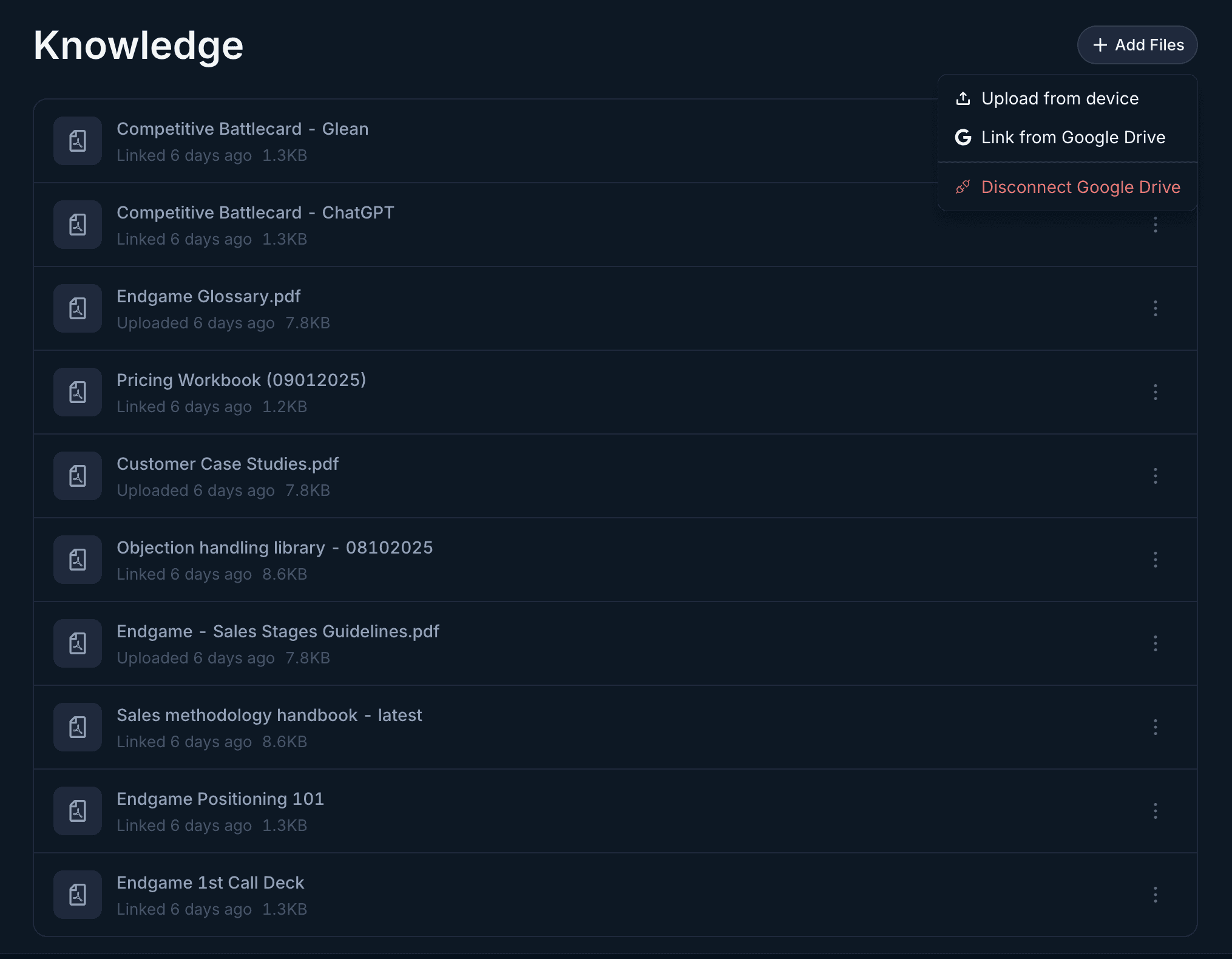What happens when your sales AI actually knows your business
September 8, 2025
Alex Bilmes
The challenge that won't go away
We recently wrote about how Templates help reps execute your sales methodology consistently. But there's another persistent challenge: getting reps to actually use what they know exists.
Consider what your reps need to recall instantly: multiple products with dozens of use cases, positioning that shifts by industry and persona, competitive strategies for multiple competitors, customer success stories organized by vertical, technical requirements, compliance certifications. Now add quarterly updates, new launches, and evolving market landscapes.
No one can hold all of this in their head—yet effective selling requires the ability to instantly recall the right information, cohesively synthesize it, and then effectively articulate it for every unique situation.
Traditional enablement platforms tried to solve this with better organization. But even the best portal doesn't help if reps don't check it, can't find what they need quickly, or don't trust that it's current.
The DIY solutions we’re seeing
Smart teams are building something different.
Instead of expensive enablement platforms, they're thoughtfully structuring Google Drive and layering Gemini on top. Reps ask natural language questions and get quick answers from the company's knowledge base. Others use tools like Glean to search across all their repositories.
This approach makes sense. It's faster than navigating traditional platforms. Theoretically, reps can use it because it's conversational. Content stays in tools your team already knows, and updates happen where your enablement team already works.
We’re increasingly seeing this pattern. Teams have realized the problem isn't organizing content better—it's making it instantly accessible through AI.
They're right. But they're also hitting limitations.
Why knowledge without context falls short
Here's what these DIY solutions miss: your content doesn't exist in isolation.
When a rep asks "How do we compete against Competitor X?", they don't just need positioning. They need:
Which features matter for this prospect's use case (from discovery calls)
What objections this economic buyer raised (from email threads)
What are the latest offerings of Competitor X (from their website and news)
Which proof points resonate in this industry (from similar closed-won deals)
This is where Endgame bridges all worlds when you connect your internal enablement and process materials—because that institutional knowledge is crucial. Endgame automatically combines it with your first-party data and interactions from Salesforce, Gong, and other critical systems, along with information from the wider web.

Knowledge meets reality
When your champion says "My boss is leaning toward Competitor X," Endgame doesn't just surface your competitive strategy.
Drawing from Salesforce, it knows this is a 5,000-person financial services company different reps have engaged with in the past. From the news, it knows that increased regulatory scrutiny changes how they might prioritize your offering. From discovery calls, it understands they care about implementation speed. From email threads, it sees the economic buyer mentioned compliance concerns. From historical data, it recognizes that similar deals won when you led with API flexibility.
The response combines institutional knowledge with situational intelligence: "For this financial services opportunity, counter with our 6-week implementation (they take 4 months). Address the compliance concern they raised with our SOC 2 Type II. Similar-sized deals won when we showed API flexibility—share the Hartford case study."
Enablement that executes itself
This combination powers everything. When you run a deal inspection template, it pulls from your methodology documentation in Drive, current deal status from Salesforce, recent customer interactions from Gong, and competitive intelligence from your positioning docs. Your content becomes actionable, and not as information that has to be separately learned and internalized, but as guidance that’s automatically incorporated into a rep’s natural flow of information and decision-making.
The best of both worlds
The DIY approach we’re seeing gets one thing right: AI makes enablement actually useful. But knowledge without context is only half the solution. When you connect your knowledge repositories to Endgame, your content becomes conversational with deal context. Your materials stay in familiar tools but connect to live data. Your team gets answers that combine institutional knowledge with customer reality. And your enablement team focuses on creating great content, knowing it will reach reps at exactly the right moment, with exactly the right context.
Share this article



